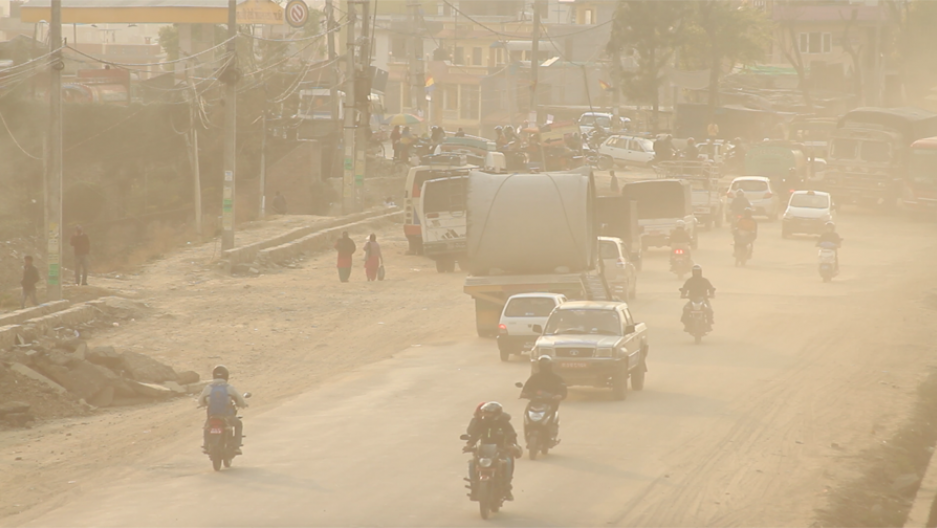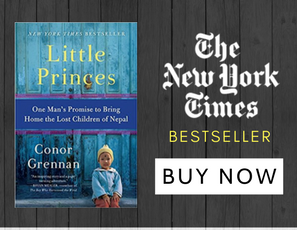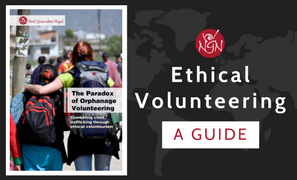Last week, a 15-year-old boy from Kathmandu, who was suffering from Covid-19, was rushed to Bir Hospital, after his condition started deteriorating. The boy, who was in home isolation after being infected, was first admitted to the intensive care unit and later placed on ventilator support.
“When his condition did not improve even after a week on a ventilator, we performed an influenza test. The test came out positive,” Dr Ashesh Dhungana, a pulmonologist, who is also a critical care physician at Bir Hospital, told the Post.
“The risk of co-infection of influenza along with coronavirus has increased with the decrease in temperatures and increase in pollution levels.”
That polluted air worsens the spread and severity of Covid-19 has been established by studies across the world.
“Air pollution has a direct and strong relation with the coronavirus,” said Dhungana. “New cases of coronavirus, severity and deaths will increase if infected patients are exposed to air pollution.”
Cases of coronavirus infections are seen more in cities notorious for air pollution like New Delhi and Kathmandu, relative to other cities in respective countries.
Prolonged exposure to air pollution has been linked to an increased risk of dying from Covid-19, and for the first time, a study has estimated the proportion of deaths from the coronavirus that could be attributed to the exacerbating effects of air pollution in all countries around the world.
The study, published in Cardiovascular Research, a journal of European Society of Cardiology, estimated that about 15 percent of deaths worldwide from Covid-19 could be attributed to long-term exposure to air pollution. In Europe, the proportion was about 19 percent, in North America 17 percent, and in East Asia it was about 27 percent.
Another new study by researchers at Harvard University has shown that people infected with Covid-19 who live in areas with high levels of air pollution are more likely to die from the illness than those who live in less polluted regions.
The study based on Covid-19 data of the United States showed that an increase in the level of PM2.5 by just one microgram per cubic metre can raise the risk of death due to the coronavirus infection by 11 per cent.
Air in Kathmandu Valley gets worse reaching unsafe levels once the winter sets in.
The State of Global Air report 2020 placed Nepal among the top 10 countries with the highest outdoor PM2.5 levels in 2019. With an annual average emission of 83.1 micrograms per cubic meter (μg/m3) of PM2.5 in the country, Nepal was placed only behind India.
PM2.5, or particulate matter less than 2.5 microns thick, are among the most dangerous pollutants that can get past the nose and throat to penetrate the lungs and even the bloodstream. Since PM2.5 particles are small, they are also likely to remain suspended in the air for longer, increasing the chances of people inhaling them.
As per the report, PM2.5 pollution killed 17,900 Nepalis in 2019. In the year, 42,100 deaths in Nepal were attributed to air pollution.
The end of the monsoon season also means more pollution.
Air pollution level increases more than threefold in the dry season, compared to the monsoon season, due to some natural reasons like lack of rainfall, wind flow and temperature inversion, according to environmentalist Bhusan Tuladhar.
“Winds also bring polluted air from India every year,” said Tuladhar. “Polluted air gets flushed naturally by monsoon rain, which could not happen in the dry season and strong winds don’t flow in winter to take the polluted air elsewhere.”
There are man-made reasons too for the increase in air pollution in the dry season.
“Human behaviour of burning waste materials, brick kilns and construction works also contribute to bad air,” said Tuladhar. “The authorities should prevent burning of waste materials and strictly enforce pollution checks on vehicles.”
According to doctors, higher levels of pollution are also a factor for the increase in risk for those with pre-existing respiratory conditions, as such people are more vulnerable to both coronavirus and influenza attacks.
“It will be more challenging for those with pre-existing conditions and to the authorities concerned, as it will be more difficult to differentiate coronavirus cases from non-coronavirus cases,” Dr Santa Kumar Das, an expert on internal medicine, who also coordinates the Covid-19 management team at Tribhuvan University Teaching Hospital, told the Post.
Besides, of late the number of Covid-19 tests has gone down since a Cabinet meeting on October 5 decided not to perform free tests and treatment for all.
As of Sunday, 194,453 people throughout the country have tested positive for the coronavirus. The country has reported 1,108 deaths so far due to Covid-19. In the last 24 hours, of the 12,311 samples, 2,817 people tested positive, including 1,533 in Kathmandu Valley, according to the Ministry of Health.
Other than air pollution, the drop in temperatures is also expected to increase the number of coronavirus cases. Besides, exacerbation of existing respiratory conditions, coronavirus, which transmits via respiratory droplets produced when infected people cough, breathe, sneeze or talk, could spread more as winter approaches.
Studies have shown that the coronavirus survives more in cold and dry conditions.
The minimum temperature across the country has declined in recent days.
According to the Meteorological Forecasting Division, the minimum temperature of Kathmandu Valley was 8.7 degrees Celsius on Sunday morning.
Further, doctors also worry that since outdoor mobility of people will decline during winter, chances of indoor exposure to the infected patients will increase.
“With the approach of winter, we should make the use of face masks mandatory and strengthen our health system by increasing beds, infrastructure and human resources to cope with the possible challenges,” Dr Baburam Marasini, former director at the Epidemiology and Disease Control Division, told the Post.
“All should be aware that both chances of co-infection and severity level will increase in winter.”






